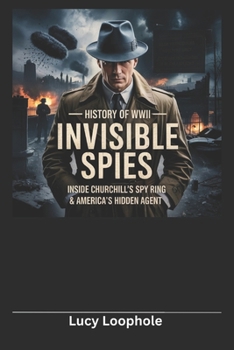History of WWII Invisible Spies: Inside Churchill's Spy Ring & America's Hidden Agent
The story of Ernest Cuneo and the secret intelligence operations conducted from an unassuming office in Rockefeller Center represents a crucial, yet often overlooked, chapter in World War II history. While popular narratives from that era frequently emphasize battlefield heroics or the dramatic events surrounding the Manhattan Project, the covert activities carried out on American soil remain largely shrouded in mystery. This book explores how British intelligence, through the British Security Coordination Office, utilized local expertise and political networks in the United States to effectively counter Nazi conspiracies.
Ernest Cuneo's journey from a talented collegiate football player to a trusted insider in the corridors of power highlights the complex nature of espionage. His unique background-as an Italian American navigating a largely different cultural landscape-provides a compelling perspective on the intersections of race, identity, and patriotism during a time when national security was paramount. More than simply a biography of an individual, this study investigates the operational dynamics of the espionage network itself, revealing how intelligence was gathered, processed, and utilized during a time when information served as a weapon as powerful as any artillery.
Research Objectives and Scope
The primary objective of this book is to offer a meticulously researched account of the covert intelligence operations in the United States during World War II, focusing specifically on the role of Ernest Cuneo and the British Security Coordination Office. In doing so, the book aims to fill gaps in the historical record by presenting a balanced narrative that integrates political, social, and operational perspectives.
Structure of the Book
Espionage in World War II
The Emergence of American Espionage
The Life and Times of Ernest Cuneo
Churchill's Covert Operations in America
The Rockefeller Center Spy Ring
Connections with Influential Figures
Espionage Techniques and Intelligence Tradecraft
Legacy and Impact of the Spy Ring
Research Methodology and Source Analysis
Each chapter is designed to build on the previous one, gradually unveiling the complexities of wartime intelligence operations while maintaining a strict commitment to factual accuracy and neutrality. This structure not only ensures a logical flow of ideas but also allows for a multidimensional exploration of the subject, blending detailed historical analysis with personal biography and operational insights.





